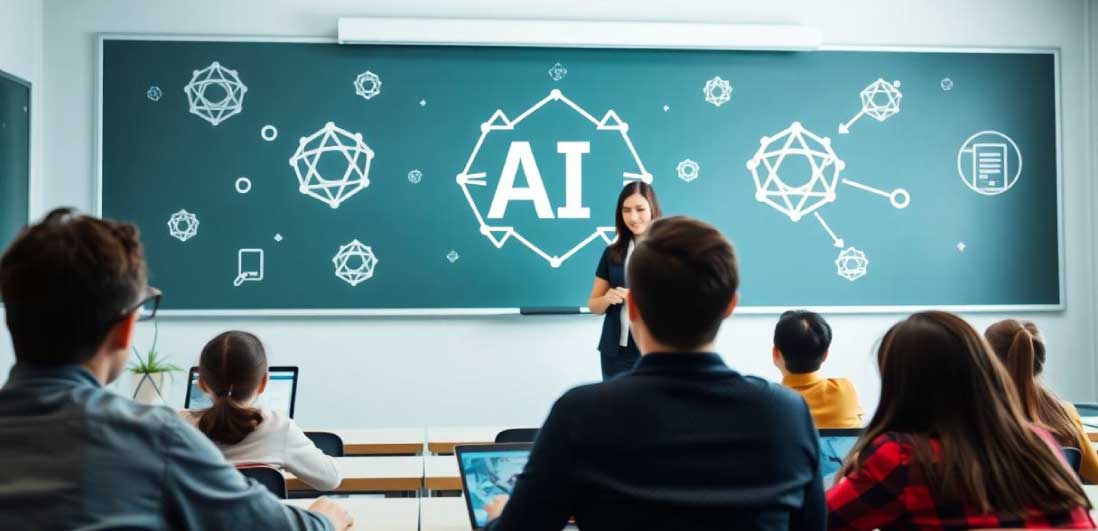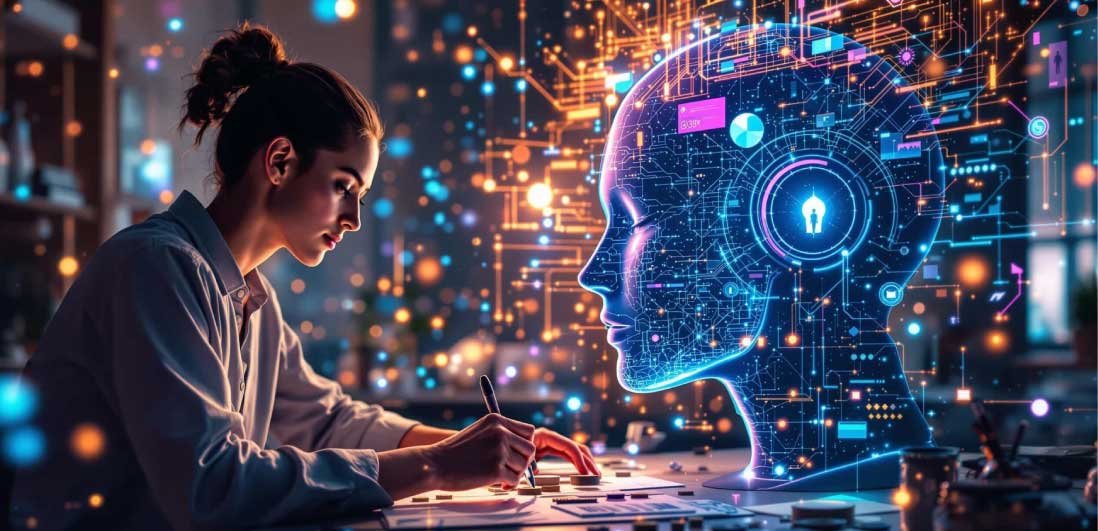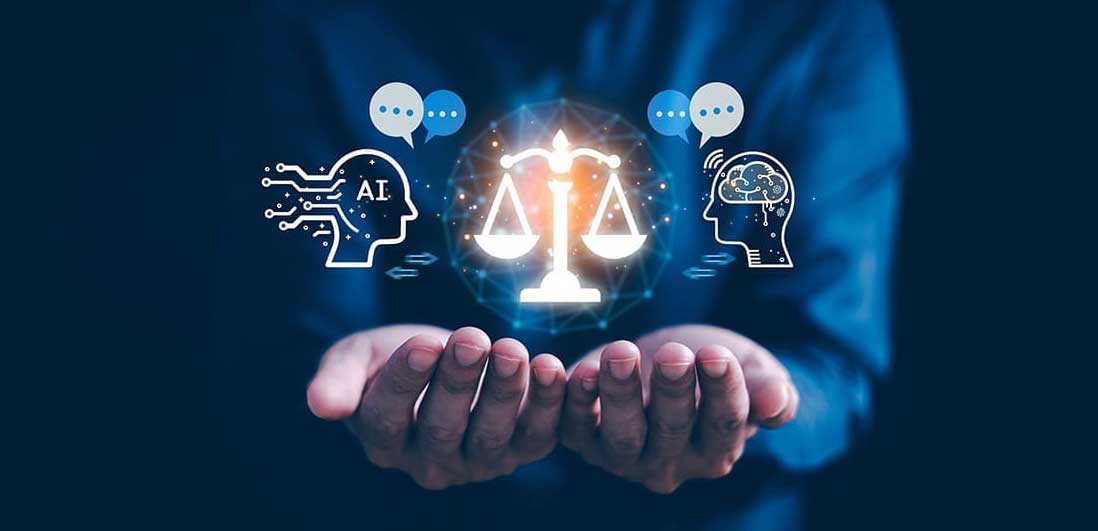The Future of the Classroom: How AI is Tailoring Education to Every Student
An imagined learning environment in which one student explores ancient Rome through a hardware-supported virtual reality exploration and another student is trying to understand quadratic equations with a digital tutor that personalises itself according to the pace of learning. It is not the sci-fi scene; this is the reality of education under artificial intelligence. Personal learning, the cherished dream, has indeed got closer to being true, and it will change how institutions undergo the teaching-learning process. It is moving beyond the industrial-era model of education toward a future in which every learner’s educational journey is as unique as him or her.
Beyond One-Size-Fits-All: Understanding the Mechanics of AI-Powered
For many centuries, education had generally been conducted with a one-size-fits-all philosophy. The teacher would give a lesson to a full class, knowing it would be too fast for some and too slow for others. AI breaks all this by functioning as a super-sensitive, data-driven engine for customisation. Its operations involve continuously collating data on a given student’s performance, how much time it takes to answer a question, where the student hesitated, and what they got right and wrong at the very first attempt. Advanced algorithms then analyse, assess and consider these data points to understand not only the knowledge state of a student but also the learning style and even confidence levels, creating and so on.
Your 24/7 Learning Partner: The Role of AI Tutors and Assistants in Student Success
There is no roadblock faced by a student, except in rare cases when it happens during school hours with a teacher beside them. That is where AI tutors and assistants become helpful. These smart systems work for the students twenty-four-seven all through the week and anywhere they need them. Are you having some difficulty with calculus problems at 10 p.m.? The AI tutor is there to nudge you with a hint, explain by giving a similar example, or even explain the concepts in question in a different way. The net result is that there’s a very low-pressure, nonjudgmental environment in which students can ask “stupid” questions and just work all kinds of problems until they literally master them. This type of network keeps learning open and establishes independence and strength.
Data-Driven Insights: How AI Uncovers Hidden Learning Gaps and Strengths
The teacher might know that the student is struggling with maths, but it takes immense time and skill to pinpoint that the real issue is a foundational gap in fractions and not those new algebra concepts being taught. AI excels at this diagnostic work. It uses the pattern in a student’s answers to determine discrepancies in skill sets that otherwise would go unnoticed. In the reverse, it can also discover latent gifts and talents, indicating that a student who is quiet in class has deep knowledge in astrophysics.
Engaging the Digital Native: Using AI to Create Dynamic and Interactive Lessons
Today’s students are the technology-native, “everything media” cherished individuals who are bred on a diet of gaming and on-demand content with a short attention span. A traditional textbook or lecture, thus, has a hard time standing up against these preferences. But AI itself is a teaching method! In a history course, an AI-enhanced lesson is, in fact, a book-turned-into-storytelling show in which the students play the role of decision-makers. The science chapter will be transformed into a learning experience resembling procedures in an actual laboratory. And so on. Personalising materials relevant to yet another student’s worlds, like substituting football or soccer in place of primary situations in the same topic, gives intrinsic motivation and transitions the teaching process into bearable and improved learning.
From Overwhelmed to Organized: AI Tools for Executive Functioning and Study Skills
Doing well in studies comes not merely from understanding course material but from organised, time-bound, and planned methodologies opted for tertiary or executive functions now being neglected. Many students struggle with organisation. AI-driven devices are like face-to-face co-pilots, assisting students’ disentanglement of tasks into doable parts, helping them to contrive uniquely personal study schedules, summarising everything before exams, reminders against deadlines, redirecting for an ADHD educator, or for all who find index cards intrusive in their educating. These AI capabilities help with AD HC, thereby massively decreasing anxiety and allowing them to focus mental energy on real learning.
The Teacher's New Ally, Not Replacement: How AI Empowers
AI transforms the business of freeing teachers from administrative burdens and analytical tasks that waste their time. This means the handling of grading, data analysis, and creating routine practice exercises with which the teacher is free to do what only a human can do – inspire, mentor, and build relationships. With AI providing a dashboard that is student-specific in revealing individual needs, a teacher can conduct more meaningful one-on-one conversations, steers enriching group discussions, and can offer the kind of empathetic support at the core of great teaching. Future classrooms are a partnership with AI doing the data and staff putting heart.
Educators Custom-Tailored Curriculum: How AI Designs Unique Learning Pathways for Each Student
The greatest advanced feature in personalised learning is personalised curriculum design. AI could design a bespoke learning journey for every single student. If they are very quick in mastering a particular concept, the AI does not hold it up for when the rest of the class has reached that same level; instead, it offers more complex materials or looks at the topic more deeply right away. A student needing extra time receives further materials, explanations, and practice problems to reinforce understanding and ensure no one runs bored and is left behind.
Preparing for Tomorrow: How Personalized Learning with AI Builds Essential Future Skills
The concerns related to letting AI into our homes should definitely be focused on. Simply put, these devices work on data collection – yours would be voice commands, everyday routines, and even videos. There are concerns pertaining to privacy, storage and access to that data. To reduce risk, users should take responsibility: create a standalone strong password for each service and have two-factor authentication enabled. Users should periodically review the permissions of devices and examine privacy settings and purchase from reputable companies that have an easily understandable and clearly defined policy for data collection and use. Making sense of this trade-off of convenience for data sharing would help bring about utility and benefits from that perspective.
CONCLUSION
Integrating AI into everyday life has not completed the revolution; in fact, it is still evolving. Such a future looms much more anticipated and fluid. The direction of travel indicates that it is toward “ambient intelligence”, in which AI will disappear into the background from which environments will proactively adapt themselves to human needs without explicit requests. Imagine a house adjusting light and music depending on the individual’s levels of perceived stress and appliances predicting needs for servicing by themselves.



